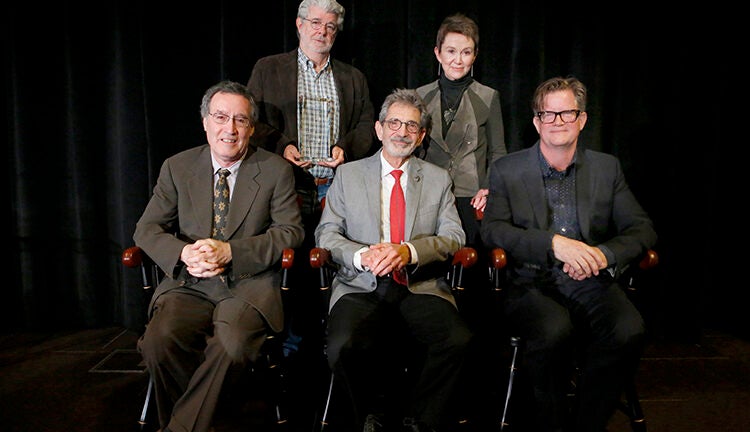
Why Endowed Chairs Matter
As timeless as the university itself, endowed chairs are the gold standard for recruiting distinguished faculty and supporting academic endeavor
Nobel laureate and hydrocarbon-decoder George Olah has one. So do world-famous violinist Midori Goto, DNA-computing pioneer Len Adleman and visionary Internet social theorist Manuel Castells—among more than 300 other USC faculty. They’re the proud holders of endowed chairs. In many cases, it was a chair that helped attract these luminaries to USC in the first place.
Endowed chairs date at least as far back as ancient Rome. Steeped in tradition and ceremony, endowed chairs continue to be a magnet for recruiting and retaining faculty, and represent the highest accolade a university can bestow upon a professor.
So important are chairs that recruiting a world-class faculty member sometimes can’t happen without them, says Beth Meyerowitz, USC professor and former vice provost.
“It has a meaning that’s understood by all of us in academia,” explains Elizabeth Graddy, vice provost for academic and faculty affairs. She should understand their prestige: Graddy holds the Jeffrey J. Miller Chair in Government, Business, and the Economy at the USC Price School of Public Policy.
It was the Epstein Family Chair in Industrial and Systems Engineering, for example, that helped woo Jong-Shi Pang to the USC Viterbi School of Engineering in 2013. Pang’s pioneering contributions to mathematical modeling have the potential to solve major issues facing society, from health and social sciences to homeland security and communications systems.
In the case of developmental biologist Andrew McMahon—a leading scientist who left his endowed professorship at Harvard University to join USC in 2012—an endowed chair at USC was a natural. Today he spearheads USC’s stem cell efforts as the inaugural holder of the W. M. Keck Professorship of Stem Cell Biology and Regenerative Medicine.
Chairs also play a role in faculty retention. In 2005, eight stellar cinematic arts faculty were installed in new chairs on the same day. A decade later, all but one of the original eight are still at USC—a testament to the staying power of chairs. Distinguished media scholar Ellen Seiter is one of them. “It represents the high point of my career after 24 years of university life,” said Seiter, an expert in the effects of digital technology on young children, at the ceremony installing her in the Stephen K. Nenno Endowed Chair in Television Studies.
The Name on the Chair
Chairs not only elevate the holder but also honor in perpetuity the person they’re named after. Two years ago filmmaker George Lucas ’66 endowed three chairs named for early cinema pioneers Georges Méliès, Sergei Eisenstein and William Cameron Menzies. In 2013, director Steven Spielberg, a USC trustee, asked the university to name a chair in honor of his lifelong friend and collaborator Michael Kahn, film editor on 24 Spielberg projects. Ten years ago, Lucas and Spielberg teamed up to fund chairs named for two Hollywood craftsmen they admire: music editor Kenneth Wannberg and cinematographer Conrad Hall. In 2004, Lucas endowed a chair named for esteemed sound editor Kay Rose.
“It was important for George and Steven to honor these people,” explains Marlene Loadvine, senior associate dean for external relations at the USC School of Cinematic Arts. “They want the students to remember these giants in their craft.”
The focus of the chair also matters. “A donor can push research forward by funding chairs in areas that fall between traditional disciplines,” says Leo Braudy, whose own chair, the Leo S. Bing Chair in English and American Literature, straddles two fields.
During the $6 billion Campaign for USC, more than 70 new chairs have been created. And unlike endowing a brick and mortar building, establishing a chair has a personal side.
“One of the great things about giving money to support a professor rather than a building is that you can have lunch with a professor,” says Vice Provost Martin Levine, holder of the UPS Foundation Chair in Law and Gerontology. It’s not unusual for chairholders to regularly talk with their benefactors—sharing their latest journal articles, inviting them to public lectures and introducing them to promising students.
It turns out the chair—that humble, inanimate object—might just be the most human expression of a philanthropic love of learning.
